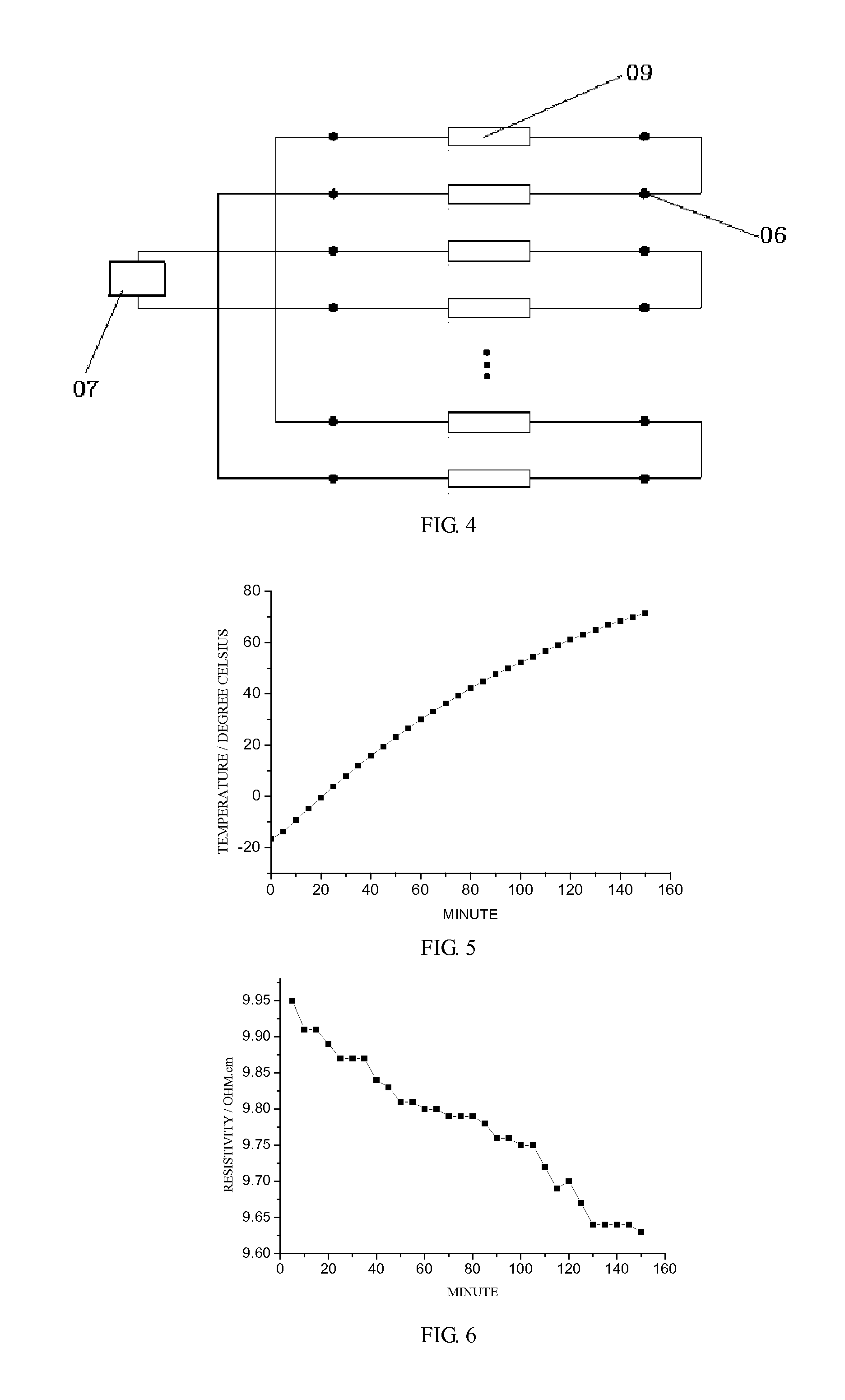Deicing method based on carbon/glass fiber hybrid textile
a carbon/glass fiber hybrid textile and deicing method technology, applied in the direction of ohmic-resistance heating, transportation and packaging, etc., can solve the problems of inconvenient and security risks to transportation, full closure, huge economic loss to a country, etc., to improve the whole mechanical behavior of the structure, improve the ability of directional strengthening, and improve the effect of anti-crack ability
- Summary
- Abstract
- Description
- Claims
- Application Information
AI Technical Summary
Benefits of technology
Problems solved by technology
Method used
Image
Examples
Embodiment Construction
[0035]The present disclosure relates to a deicing method based on carbon / glass fiber hybrid textile 01, as shown in FIG. 1. Carbon / glass fiber hybrid textile 01 is shown in FIG. 2, with carbon fiber rovings 09 in warp direction and AR-glass fiber rovings 10 in weft direction. Here, carbon fiber rovings 09 are electric heating elements. The carbon / glass fiber hybrid textile 01 is treated with epoxy resin impregnating 11 and sand penetration 12, as shown is FIG. 3.
[0036]The Construction Process is as Follows:
[0037]As shown in FIG. 1, the bottom layer is thermal insulation layer 03 with thickness of 10˜30 mm, which is laid on the substrate 02 to reduce thermal loss and make full use of power.
[0038]As shown in FIG. 1, above the thermal insulation layer 03, a thermal conducting layer 04 is installed. The treated carbon / glass fiber hybrid textile 01 is tiled in the thermal conducting layer 04, with the warp carbon fiber rovings 09 parallel to the short side of the structure, Temperature s...
PUM
 Login to View More
Login to View More Abstract
Description
Claims
Application Information
 Login to View More
Login to View More - R&D
- Intellectual Property
- Life Sciences
- Materials
- Tech Scout
- Unparalleled Data Quality
- Higher Quality Content
- 60% Fewer Hallucinations
Browse by: Latest US Patents, China's latest patents, Technical Efficacy Thesaurus, Application Domain, Technology Topic, Popular Technical Reports.
© 2025 PatSnap. All rights reserved.Legal|Privacy policy|Modern Slavery Act Transparency Statement|Sitemap|About US| Contact US: help@patsnap.com



